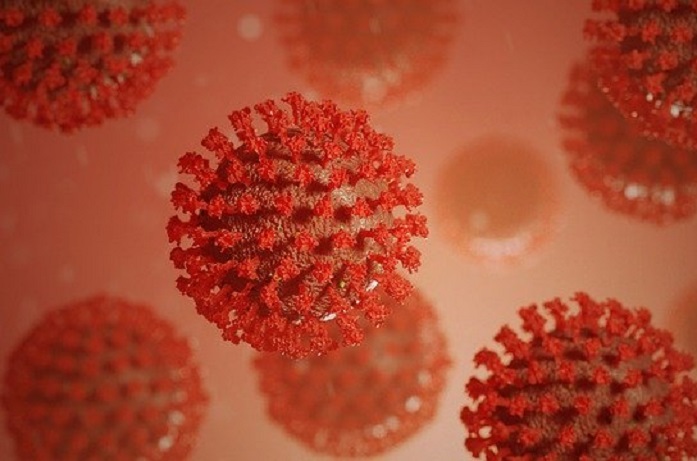A case study based on a Chinese patient explores the immune response to the pandemic virus.
The global scientific community is currently racing to establish as much knowledge as possible in the battle against the SARS-CoV-2 virus.
Scientists are exploring how the virus emerged, how it is transmitted and potential treatment options.
One of the key aspects in establishing a treatment plan is determining what the virus does to your body and, more importantly, what your body can do to the virus.
As time is of the essence, large scale clinical trial type studies are not practical.
Much of the research is based on the individual experiences of healthcare practitioners at the frontlines. Often research is based on case studies involving small numbers or even a single patient.
Nature published one such case study report from researchers at The Peter Doherty Institute for Infection and Immunity in Melbourne(1).
This case report documents the immune response of a 47-year-old woman from Wuhan, Hubei province, China. The woman had presented to an emergency department in Melbourne with a 4-day history of sore throat, dry cough and tiredness.
She had travelled from Wuhan to Melbourne 11 days before presenting at the hospital. A swab confirmed the woman was infected with SARS-CoV-2.
At the time of presentation her white cell counts were normal but levels of the inflammatory marker C-reactive protein (CRP) were elevated.
This patient recovered gradually over 7 days in hospital and was sent home on day 11. Her symptoms had completely resolved by day 13, less than two weeks after they had first appeared.
This patient consented to become part of a research study, giving researchers an opportunity to document the response of her body’s immune system.
There are a number of significant learnings to emerge from this patient’s experience.
Much of the focus is on the levels of four cell types, antibody secreting cells (ACS), which as the name suggests, are cells that produce and secrete antibodies, and three subtypes of T-cells, follicular helper T-cells (Tfh), activated CD4+ T-cells and CD8+ T-cells. They also measured levels of antibodies IgM and IgG that had been produced in response to the virus.
Notably, both ACS and Tfh appeared on day 7 and peaked shortly afterwards (ACS on day 8 and Tfh on day 9). These peaks were significantly higher in the infected patient than levels in healthy control patients.
They both remained prominent throughout the remaining recovery period.
This patient provides evidence that recruitment of these cells is a key step in the immune response and that they are present at increased levels in the blood for a number of days before symptoms recede.
The researchers also searched for the expression of two proteins (CD8 and HLA-DR) on the surface of certain T-cells. In both Ebola patients and influenza patients, the response to the virus has led to T-cells expressing these surface proteins together and is a key part in activating CD8+ T-cells to respond.
Co-expression of CD8 and HLA-DR on CD8+ T-cells was found to rapidly increase from day 7 (3.57%) to day 9 (11.8%). At day 20, this had decreased. Again, this response was markedly different from the levels in healthy control patients.
Conversely, blood levels of another immune cell type (CD16+CD14+ monocytes) were lower in the infected patient than in the control.
However, rather than indicate they play no role in the immune response to COVID-19, it may in fact suggest that these cells have migrated from the bloodstream to infection sites to fight the infection.
The study also identified one key difference between COVID-19 and the influenza A strain known as avian flu. During infection with avian flu, levels of inflammatory trigger molecules called cytokines are elevated.
However, this was not the case in the patient with COVID-19, even while she was symptomatic.
Overall, this study provides vital information on both the timelines and mechanisms for the body’s immune response to COVID-19. It provides evidence of the cell types involved in the response and how they are activated.
However, the study has obvious limitations, particularly the fact that it is an account of a single patient. These results would have to be replicated in other patients to confirm the findings.
Written by
Michael McCarthy
1. Thevarajan I, Nguyen THO, Koutsakos M, Druce J, Caly L, van de Sandt CE, et al. Breadth of concomitant immune responses prior to patient recovery: a case report of non-severe COVID-19. Nat Med. 2020.
Image by Visuals3D from Pixabay
Relevant topics that may be of interest:
- Public health impact of SARS-CoV-2 vaccine
- Does UV light inactivate SARS-CoV-2?
- Is there a link between SARS-CoV-2 and Guillain-Barre syndrome?
- Does the TB vaccine provide protection against SARS-CoV-2?
- Nitric oxide as a potential treatment for the SARS-CoV-2 coronavirus
- Children could carry a higher SARS-CoV-2 viral load



